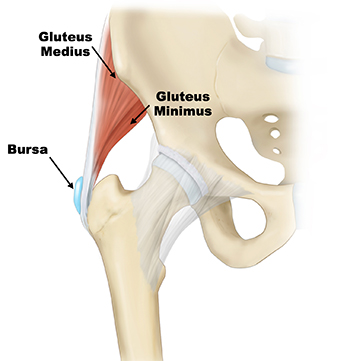Gluteus Medius / Gluteus Minimus Injuries
What is the gluteus medius tendon?
The gluteus medius is a major muscle, sometimes referred to as the rotator cuff of the hip, that surrounds and stabilizes your hip during movement and allows you to lift your leg to the side, away from the midline of your body–a movement called hip abduction). The gluteus medius also plays an essential role in allowing you to stand up straight. This muscle is attached to the bony prominence of the hip called the greater trochanter by a very strong tendon known as the gluteus medius tendon.

The gluteus medius and minimus muscles play a crucial role in hip stability and movement. Injuries or tears to these muscles can cause hip pain, weakness, and difficulty walking, often mimicking symptoms of hip arthritis. Dr. Jorge Chahla specializes in diagnosing and treating gluteus medius and minimus injuries, offering both non-surgical and surgical solutions to restore function. If you are experiencing persistent hip pain, schedule an appointment with Dr. Chahla in Chicago, Naperville, or Oak Brook for expert care.
- Triple fellowship-trained sports medicine surgeon
- Performs over 800 surgeries per year
- Associate professor of orthopedic surgery at Rush University
- Learn more
